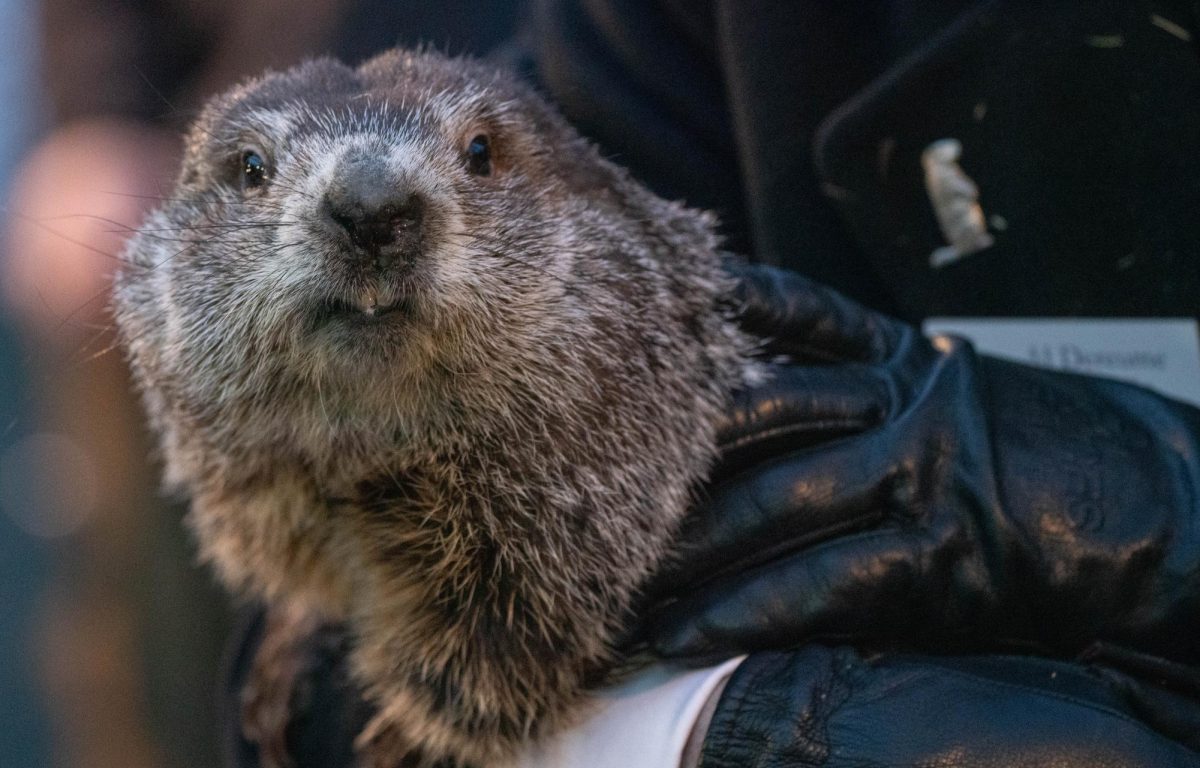A groundhog predicts Spring: what’s that about?
It happens every year on the second of February. A furry rodent is lifted into the cold air and predicts the future forecast for the rest of the Winter season. A 1993 movie with the same name was based on this holiday. This is Groundhog Day.
Groundhog Day is celebrated every February 2 in Punxsutawney, Pennsylvania. This year marks the 138th anniversary of the holiday. During the sunrise ceremony, a groundhog named Phil is lifted out of his stump with his eyes open wide. Men in suits and tophats open a scroll with the groundhog’s final decision written on it. If Phil sees his shadow, he predicts six more weeks of winter weather. If he does not, there will be an early spring. After the announcement, a full-day celebration takes place in Punxsutawney. This year is the first time since 2020 that Phil predicted an early spring.
According to the official Punxsutawney Groundhog Club, the holiday originated from an old Christian tradition. It came from Candlemas Day, in which Christians would bless their candles in church on February 2, in order to have a comfortable winter. This tradition was adopted by German culture, but with a few changes. Instead of blessing candles, a hedgehog looks for its shadow, similar to the current tradition. When German settlers carried this culture to Pennsylvania, the hedgehog was replaced with the groundhog.
Mrs. Morris, who is known as one of the school’s popular “winter weather predictors,” likes the historical context of the holiday, but has different thoughts on the event itself.
“Today, all that groundhog sees is flashing lights…whether it’s six weeks of winter or six weeks ’till spring, it’s still six weeks. Weather is fickle…sometimes he’s right, sometimes he’s wrong,” she said.
While Groundhog Day is one of the most popular weather-predicting traditions, there are many versions of the holiday in other countries. Some countries replace the groundhog with different animals. According to BBC.com, Milan has a similar tradition with a bear. If the weather is warm and sunny on a certain day, then the bear would come out and collect materials for a new bed. The bear would then go back to bed, and sleep for a longer winter. If it is rainy, then the bear would stay inside and prepare for an early spring.
Another old Italian tradition that holds similar qualities to the American Groundhog Day, this time involving a blackbird. The tradition is called I giorni della Merla, meaning “the days of the female blackbird,” and takes place in the final three days of January. In this tradition, the blackbird was originally a beautiful bird, which gave her an ego. The month of January was upset with the bird’s attitude, so it made the weather extra cold. The blackbird hid in a chimney for three days, tainting her feathers. In current culture, if the weather is harsh during these three days, Spring would come soon. If the weather is mild, winter would last longer.
Other states beside Pennsylvania hold different animal-based Groundhog Day events. According to worldpopulationreview.com, 35 states celebrate their own versions of Groundhog Day. While most use their own groundhogs (like Potomac Phil in Washington D.C.), some states use different animals. The animals range from prairie dogs, desert tortoises, owls, to even a bullfrog named Snohomish Slew.
Between the popularity in Pennsylvania, the states, and worldwide, it is granted that this holiday is not going anywhere. The centuries-old groundhog will continue to celebrate this long-standing tradition for winters to come.















